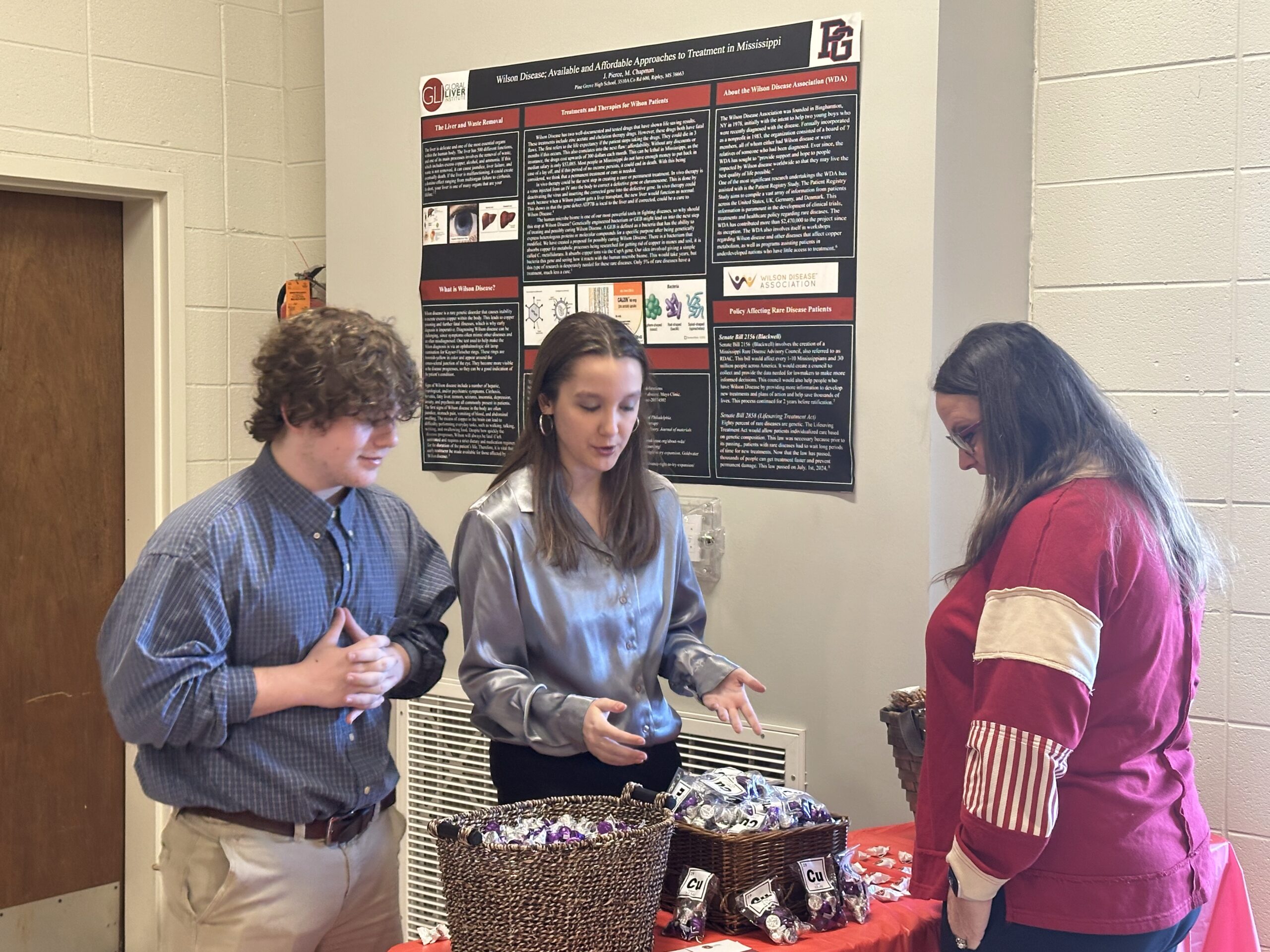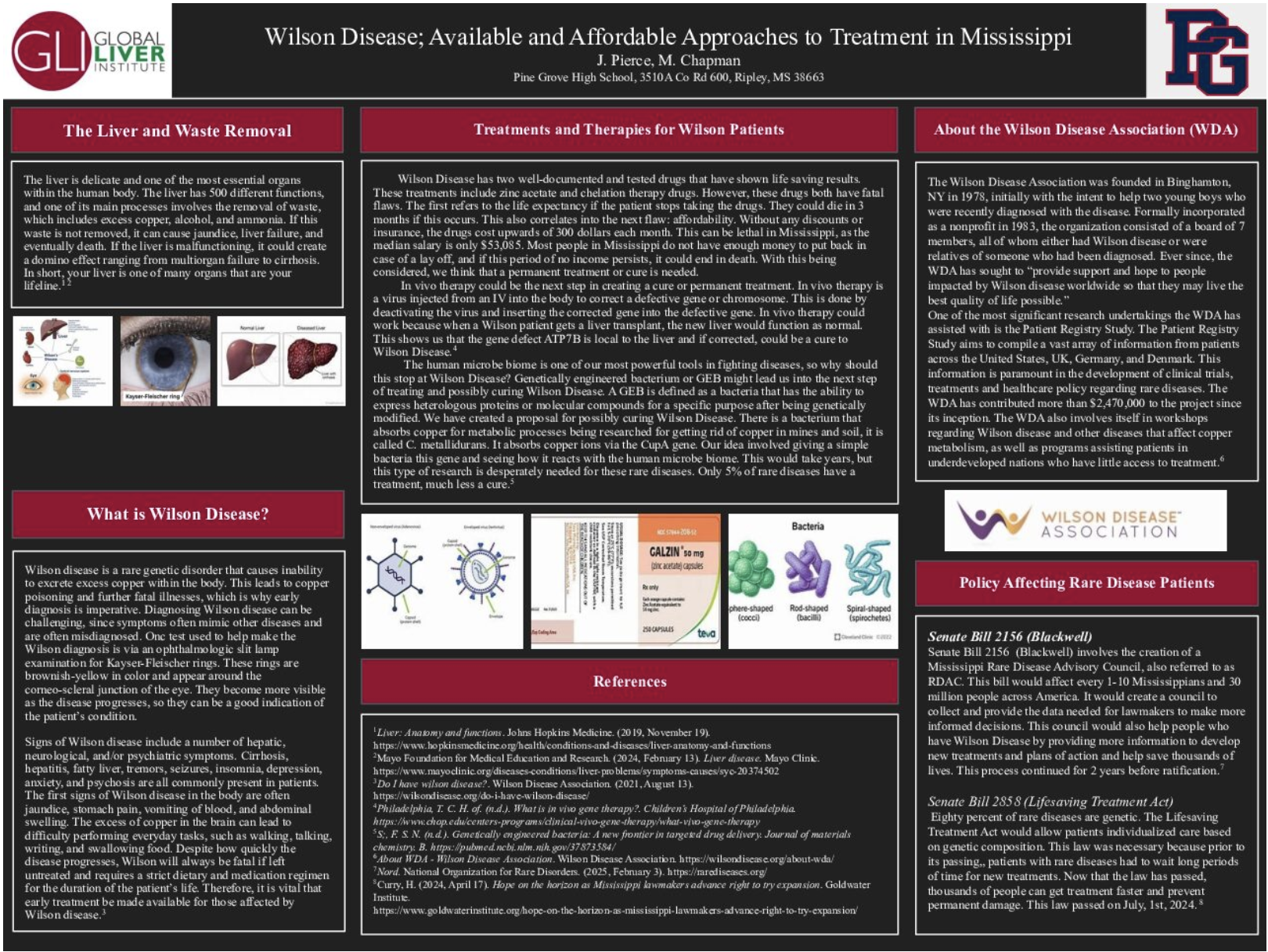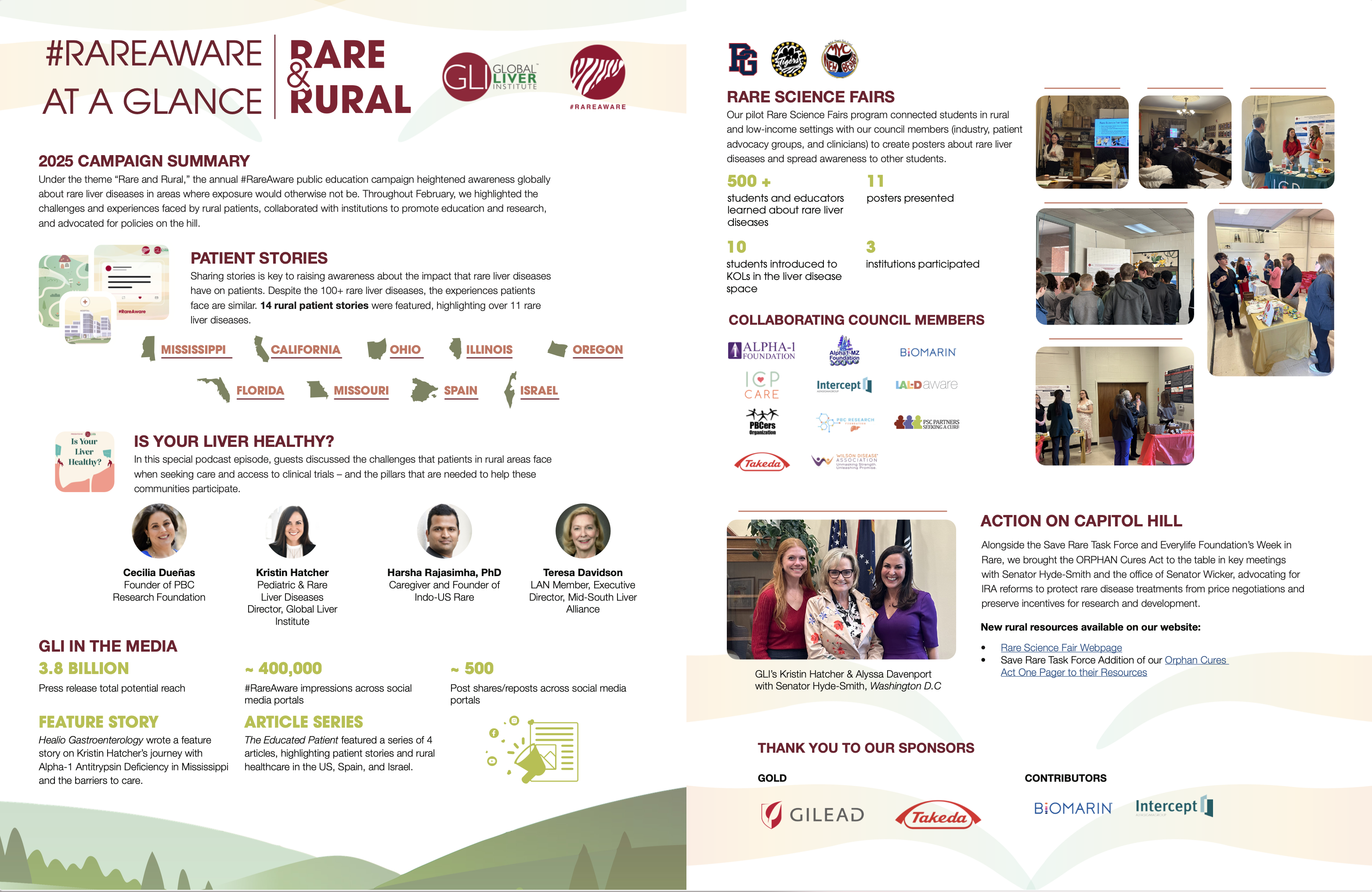
Rare Science, Real Impact: A Student’s Perspective – Pediatric and Rare Liver Diseases News
Student Feature: My Experience Beyond February’s Rare Science Fairs Project
MiKayla Chapman, 18, 12th Grade, Pine Grove High School – Rare Science Fair Participant


Growing up in rural Mississippi, I believed that opportunities in science were reserved for people from well-connected backgrounds. My only exposure to science came from watching ants and squirrels in my backyard and learning about animals from Wild Kratts. In high school, I fell in love with anatomy, physiology, and space, but I always assumed that breaking into the science world would be out of reach for someone like me.
That changed when I had the opportunity to work with Global Liver Institute and the Wilson Disease Association on my research project in February. I never imagined that, as a high school student from Pine Grove, I would have a research project published with support from major organizations. Even more surreal was the chance to speak directly with respected scientists—some of whom have even offered me other opportunities. As a future medical student, those connections are invaluable.
For students like me, growing up in rural communities often means limited access to educational resources and professional networks. But this experience has made me more confident and sharpened my career goals. I’ll be attending Rice University in the fall, aiming for a strong GPA to get into a top medical school like Vanderbilt or Johns Hopkins. I’m considering becoming a neurologist or neurosurgeon—or perhaps focusing on research! The skills I’ve gained from this project, from conducting research to building professional relationships, have given me a head start on that path.
I am so grateful for what I was able to achieve and what has been given to me. I cannot wait for what comes next in my scientific career.
Gene Editing Trial Showing Promising Results in Alpha-1 Antitrypsin Deficiency
Beam Therapeutics’ early trial results for BEAM-302 could be a major breakthrough for alpha-1 antitrypsin deficiency (AATD). Unlike existing therapies that require lifelong treatment and don’t address liver issues, BEAM-302 corrects the faulty gene itself.
What makes this so significant is the precision of base editing technology. By directly targeting the genetic mutation, BEAM-302 could reduce the need for ongoing treatments and improve overall health outcomes. For patients who have faced limited options and the constant burden of managing symptoms, this marks an exciting step toward a more targeted and durable solution. The potential for a one-time treatment is particularly impactful in rare diseases. However, ongoing research and education remain crucial to ensuring that patients have access to a range of options, recognizing that each patient’s needs are unique.
New Genetic Insights from Norway is Advancing the Understanding of Women’s Health
A new study in Nature Medicine identified 83 genetic risk factors for female reproductive health conditions, including intrahepatic cholestasis of pregnancy (ICP). Researchers from Estonia and Norway studied the genetic data of nearly 300,000 women and found shared genetic patterns between different reproductive health conditions. One of the biggest breakthroughs was developing a polygenic risk score (PRS) for ICP, which could help doctors predict which women are at higher risk for this condition. The study’s findings highlight how reproductive and liver health are interconnected at a genetic level, and understanding these genetic links could change how doctors approach both diagnosis and treatment.
Givosiran for Acute Hepatic Porphyria Now Accessible in the United Arab Emirates (UAE)
For the first time, patients with acute intermittent hepatic porphyria (AIP) in the UAE have access to this life-changing medication—something that has been available in other parts of the world for years. Muhammad’s story highlights the importance of expanding access to innovative treatments worldwide. The successful administration of Givosiran in the UAE marks an important step forward for rare disease care after its approval in early 2025. It’s encouraging to see this treatment becoming more widely accessible, offering hope to patients who have long faced limited options.
EASL-ERN Released New Clinical Practice Guidelines for Wilson Disease
The latest EASL-ERN guidelines introduce critical changes that could mean earlier diagnoses, better treatment tracking, and more options for those with Wilson disease. Some of these changes are:
- A new test, relative exchangeable copper (REC), that will help doctors identify Wilson disease more precisely, reducing the chances of missed or delayed diagnoses.
- Earlier access to liver transplants if a patient is showing severe neurological symptoms.
- Improved treatment tracking guidelines for providers.
- Guidelines for earlier intervention for acute liver failure treatment, including:
- Chelation therapy to remove excess copper as soon as possible.
- High-volume plasma exchange to stabilize patients before further treatment decisions.
We encourage both patients and providers to review these changes and understand their impact.
In Case You Missed It: Have You Read These Patient Features from Rare Diseases Week?
Access to specialized care for rare liver diseases isn’t just a challenge—it’s a global crisis, especially for those in rural areas. As a part of our rare liver diseases month campaign, we partnered with The Educated Patient to highlight different healthcare systems by featuring patient stories, the challenges faced, and long travel times.
Read them here:
Upcoming Events
- April 8 – 11, 2025 – International PBC Summit 2025, Edinburgh, Scotland
- April 19, 2025: World Liver Day
- April 22 – 24, 2025 – World ORPHAN Drug Congress USA 2025, Boston, Massachusetts, USA
- April 25, 2025: SOLDA Webinar: World Liver Day
- May 7- 10, 2025: EASL Congress, Amsterdam, The Netherlands
- June 2 – 3, 2025 – NORD Rare Disease Scientific Symposium, Washington, DC, USA
- June 7, 2025 – Spring 2025 Wilson Disease Conference, Toronto, Canada
- June 26 – 28, 2025 – 2025 Cholestatic Liver Disease Summit, Aurora, Colorado, USA
For more information about the Pediatric and Rare Liver Diseases Council or to learn more about joining, please visit our webpage or email pedsrare@globalliver.org.

